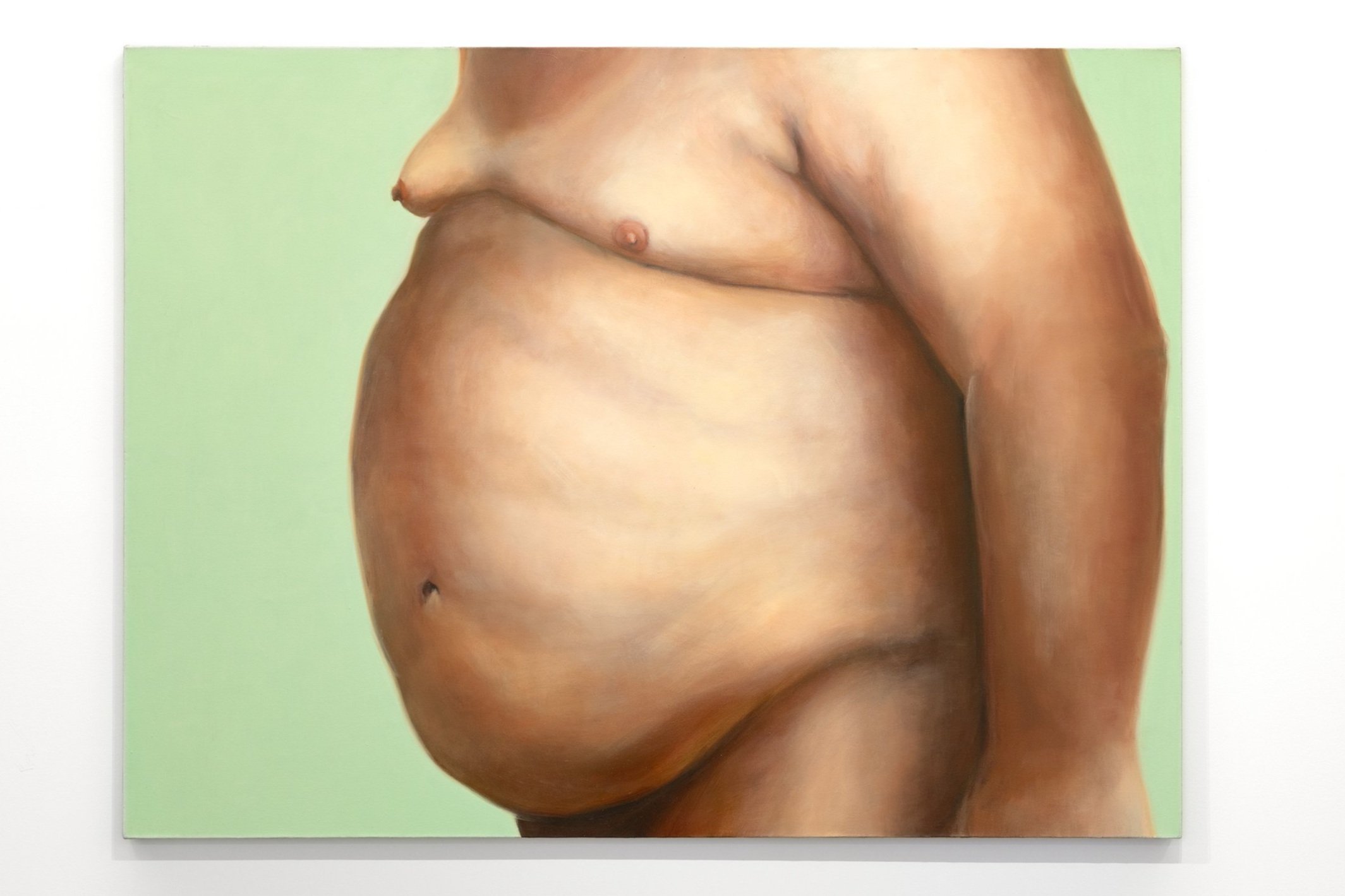Joan Linder: Belly in Whitehot Magazine
Belly: Paintings by Joan Linder at Rivalry Projects
On a recent trip through wild Western New York, I visited a gallery called Rivalry Projects in downtown Buffalo, a city teeming with creative enterprises. Rivalry, an astute young gallery showing smart work both aesthetically cool and socially trenchant, is a crisp and spartan design that dignifies the work with ample space and light. Inside the gallery you will encounter an affable and deeply informed gallerist who will be pleased to speak about the art on view to a collector, a class visit, a shy artist, or a random passerby; each conversation approached with equally engaged sincerity. I know this by observation, for this is a well-trafficked exhibition space, indicative of the scene that is thriving around town, as sharp-eyed visitors make mention of the previous or next stop on their art beat.
The proprietor here, also an artist, keeps a secondary multi-use gallery in the back of the building that functions as project room, production studio and viewing space. On the day of my visit, the work presented in the front room is a body of work, or should I say a work of bodies: a minimally hung painting display that entices, playfully confounds, and rewards the eye foremost. It is a show titled, “Belly” by the artist Joan Linder. Linder is known for large format, obsessive site-specific drawings that are performatively large and insistently detailed. The work on view at Rivalry is something quite different. I learned that this is a series of paintings made two decades ago, when the artist’s primary medium was paint, and her surfaces were built with an equally competent though different kind of certainty than her drawings.
These starkly presented bulging bellies are mostly stripped of clothing and any interior information or ornament (aside from one faded dragon tattoo) and do a swift job of proclaiming that they serve allegorical purposes. These full bodies have consumed enough to evidence an indulgent and bounteous existence. They are neither recumbent, nor diaphanous to evoke Rubens. They are simply well-fulfilled forms. The bodies of the larger paintings are cropped to mostly obscure any portraiture above the shoulders or any provocation of dangling genitals. We must solely deal with identity by way of the midriffs, large and white. The studies offer more of an upper body portraiture, but the handling of these small-scale paintings have been expressed with a fast impasto, in dialogue with Lucian Freud or Jenny Saville. As such, they may suggest more personal information than the larger paintings but nothing that we could not already infer, that all the figures represented in this work are the white men that cast big shadows, the ones in power that the artist has stripped bare to render their mundane vulnerability.
Rich color grounds energetically applied around the subject form an ambient space, claiming territory behind the stretched abdomen that dominate the visible surface. The fluid pastel coverages are minimal yet do not fall flat as with the backdrops to the John Currin portraits made contemporary to this work; Currin’s figures of that time were inventive and starkly perverted figuration; cartoony, sorrowful, lusty images that spatially required nothing of the painting. Rather, the painterly conversation in Linder’s pursuit may be more oriented to the feminist gaze of Joan Semmel, another artist who sets up a feud between the figure that pushes out from the canvas and the planar staging that wants to frame the bodies back in with such tension that the canvas appears sure to collapse. All three painters balance bodies with reductive ground. Linder’s grounds function, with their proximity to the figures often indicated by their drop shadows, as a discrete apparatus of a photographer’s studio. The figure has been backed up to the screen, placed in a pose under the direction of the studio, and apparently subjected to close observation.
For what purpose does this dynamic play out? Is it a context of medical scrutiny? The weight of the unclad subject may queue the viewer to consider the physical health of a middle age body, how it structurally supports itself under load. In the varying postures depicted, one almost hears the stage direction, and this could lead us to understand the context completely differently. Are these test shots for models that are intended for an audience of this particular body type? In which case, there is a possibility that the figures are snapshot studies meant to titillate. This supposition is reinforced by one painting in which two figures appear together. Two bearded men, perhaps before or after a physical act, appear to have a passive exchange of glances. If this were the case, the images may derive from the awkwardly charged spaces in between pornographic moments of action like the vacant sites of Larry Sultan’s ‘Valley’ scenes or Jeff Burton’s documentary images of on-set fluffing. Burton suggestively titles images of porn by naming insipid objects in the vicinity; a stapler, a lamp. Linder’s cropping of the image to barely include the top edge of her subject’s trousers, like the nonchalant exchange shared by the subjects in the double portrait project a similar effect, in which any possibility of emotional connection or arousal is muted by the command of the painter’s gaze and the uniformity of the lighting.
Entertaining this narrative direction returns my attention to the code-switching semi-pastel palette of the backdrops. Are they lighthearted color fields applied to diffuse the severity of a situation, be it medical or erotic? Are they meant as a spectrum of institutional tones, like the studio sets of high school yearbook portraits, -institutional environments where identities are simultaneously explored and programmed? Or, to build on some of the things that inform Semel’s paintings, is Linder experimenting with understandings of how theories of the male gaze have become more layered and complex as wider acknowledgment of gender identifications and sexual orientations have interrupted the binary understandings of how women and men perceive one another. In considering this it may be irrelevant to think of these paintings exactly as depictions of men. They are bodies, robust and pregnant with meaning. WM
-AXEL BISHOP




